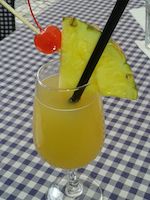 |
Havana Special |
Havana Special is a delicious drink, yet a very simple one. As with everything else, the effect lies in the details. Fresh pineapple and the best available white rum i.e. Ron Blanco (Havana Club) are essential. Add some Marrasquino and a few ice cubes and that is all. Use cheap rum and canned juice and ... the results will be predictable.
Rum is booze made from sugar cane. Every nation on Earth finds a way to utilize plants to make booze: in Mexico tequila is made from blue agave cactus, in northern France calvados is made from apples, in Italy grappa is made from grapes, in Bavaria, Austria, the Czech Republic and Slovakia, various lovely schnappses are made from apples, pears, plums, peaches, apricots. In the Caribbean, folks found a way to make rum from sugar cane.
The superpowers of the rum world are Cuba, Dominican Republic and Jamaica, followed by Guadeloupe, Saint Vincent, Grenada, Barbados, Santa Lucia, Trinidad and Tobago, and Puerto Rico.
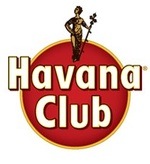
 Rum is ultimately associated with Cuba, and of all the Cuban rums none is more known
than Havana Club. The brand was established by José Arechabala (Don José Arechabala y
Aldama) in 1878. Arechabala was born in Gordejuela in Vizcaya in the Basque region of
northern Spain. He arrived in Havana in 1862 at the age of 15. Sixten years later,
he went into business for himself and opened a small distillery in the town Cárdenas.
By the 1950s, the business has grown into a huge and highly capable enterprise.
It was run by José Fermín Iturrioz "Josechu" and produced not only quality spirits
(rum and brandy), but also vermouth, refined sugar, candies and fuels.
Then came the Cuban revolution in 1959 and put an end to everything. The Communist
regime expropriated (they used the euphemism "nationalized") the company
as well as the family estate, Josone, and stole the name "Ron Havana Club".
José Arechabala, S.A. was condemned to anonymity. Josone was turned by the Castro regime
into a park for weary proletarians to enjoy the fruits of their class struggle.
Other proletarians like Brezhnev stayed in the family villa during state visits.
Rum is ultimately associated with Cuba, and of all the Cuban rums none is more known
than Havana Club. The brand was established by José Arechabala (Don José Arechabala y
Aldama) in 1878. Arechabala was born in Gordejuela in Vizcaya in the Basque region of
northern Spain. He arrived in Havana in 1862 at the age of 15. Sixten years later,
he went into business for himself and opened a small distillery in the town Cárdenas.
By the 1950s, the business has grown into a huge and highly capable enterprise.
It was run by José Fermín Iturrioz "Josechu" and produced not only quality spirits
(rum and brandy), but also vermouth, refined sugar, candies and fuels.
Then came the Cuban revolution in 1959 and put an end to everything. The Communist
regime expropriated (they used the euphemism "nationalized") the company
as well as the family estate, Josone, and stole the name "Ron Havana Club".
José Arechabala, S.A. was condemned to anonymity. Josone was turned by the Castro regime
into a park for weary proletarians to enjoy the fruits of their class struggle.
Other proletarians like Brezhnev stayed in the family villa during state visits.
The Arechabala family emigrated to Spain and later to the United States. Meanwhile in 1966,
the Castro regime, having no problem whatsoever playing the capitalist game,
registered the Havana Club trademark in 80 countries for themselves. Production was
moved to the city of Santa Cruz del Norte near Havana. In 1973, the family allowed
the trademark registration in the United States to lapse.
In 1976, the Castro regime moved further and suceeded in registering the trademark
with the U.S. Patent Office. In 1993, following the breakup of the Soviet Union and
the demise of Soviet support, the Castro regime, having found itself in dire financial
straits, formed a joint venture, Havana Club International, with Pernod Ricard to
grow global sales of Havana Club rum.
Pernod offered to buy the Arechabala family's claim to Havana Club but the family refused, most likely because of Pernod's association with the Castro regime. Instead, the family entered in into an alliance with Bacardi in 1997 and sold their their residual rights, including the recipe for the original Havana Club rum.
Light rums are used in cocktails, whereas golden and dark rums were consumed neat.
We thank Petr from www.rum.cz for letting us borrow two of his labels to illustrate our
story.
Sources:
1.- http://www.just-drinks.com/analysis/what-happened-when-the-history-of-havana-club_id87499.aspx
Add all ingredients into cocktail shaker filled with ice. Shake well and double strain into
a martini cocktail glass. Garnish with a pineapple wedge.
back to Radim and Lisa's Well-Travelled Cookbook | email us Last updated: June 1, 2013 Havana Club is sold throughout the world through Pernod Ricard. It is of course not
sold in the United States because of politics and the U.S. embargo against Cuba.
There is a brand sold in the U.S. called Havana Club, but this is an unrelated
product made by Bacardi in Puerto Rico (click on the image on the right to enlarge).
The two companies are, of course, suing each other over trademark violations,
each claiming they own the rights to the name Havana Club.
Havana Club is sold throughout the world through Pernod Ricard. It is of course not
sold in the United States because of politics and the U.S. embargo against Cuba.
There is a brand sold in the U.S. called Havana Club, but this is an unrelated
product made by Bacardi in Puerto Rico (click on the image on the right to enlarge).
The two companies are, of course, suing each other over trademark violations,
each claiming they own the rights to the name Havana Club.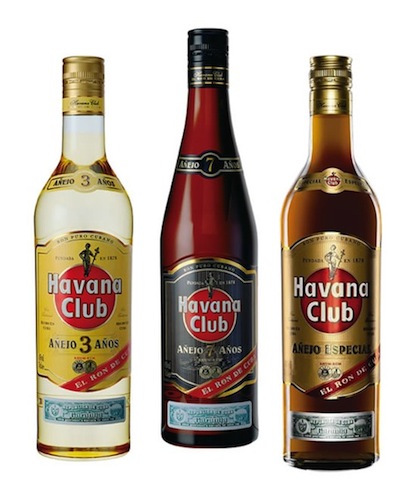 Based on color, rums are classified into white, gold and dark (click on the image on
the left to enlarge). White rums (also known as
Clear, Crystal, Blanco, Plata) are the most widely sold rums in the world. They tend to be
inexpensive as they are the cheapest to produce (most are un-aged). In gold rums
(Oro) and dark & black rums, the dark color should be obtained naturally
through careful aging, but is most often the result of additives.
Based on color, rums are classified into white, gold and dark (click on the image on
the left to enlarge). White rums (also known as
Clear, Crystal, Blanco, Plata) are the most widely sold rums in the world. They tend to be
inexpensive as they are the cheapest to produce (most are un-aged). In gold rums
(Oro) and dark & black rums, the dark color should be obtained naturally
through careful aging, but is most often the result of additives. Based on age, Cuban-style Añejo rums are often sold with the attribution of how many years
they were allowed to age (i.e. the Pernod Ricard Havana Club nomenclature of Añejo 15 Años,
Añejo 7 Años, Añejo Reserva 5 Años, etc). However, there is no standard nomenclature
for grades rum as there is with Cognacs (VS - VSOP - XO). Rum is typically
referred to by its Spanish descriptors such as ron viejo ("old rum")
and ron añejo ("aged rum").
Based on age, Cuban-style Añejo rums are often sold with the attribution of how many years
they were allowed to age (i.e. the Pernod Ricard Havana Club nomenclature of Añejo 15 Años,
Añejo 7 Años, Añejo Reserva 5 Años, etc). However, there is no standard nomenclature
for grades rum as there is with Cognacs (VS - VSOP - XO). Rum is typically
referred to by its Spanish descriptors such as ron viejo ("old rum")
and ron añejo ("aged rum"). It is important to realize that a real rum is not at all the same as the Czech "Tuzemák"
:) ... and there is a story behind that.
It is important to realize that a real rum is not at all the same as the Czech "Tuzemák"
:) ... and there is a story behind that.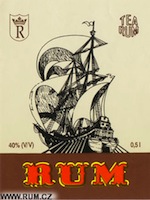 Rum substitutes have been made throughout Central and Eastern Europe since the
19th century. Many of these countries were formerly parts of the Austro-Hungarian
Empire. The tradition of inexpensive rum-substitutes, made of local ingredients,
carrying labels with various naval or Caribbean themes,
probably spread easily throughout the former empire, invoking images
of romantic far-away lands. However, none of these creations are technically rums
as they are not made from sugar cane, but from potatoes or sugar beets that have been
flavored by rum essences:
Rum substitutes have been made throughout Central and Eastern Europe since the
19th century. Many of these countries were formerly parts of the Austro-Hungarian
Empire. The tradition of inexpensive rum-substitutes, made of local ingredients,
carrying labels with various naval or Caribbean themes,
probably spread easily throughout the former empire, invoking images
of romantic far-away lands. However, none of these creations are technically rums
as they are not made from sugar cane, but from potatoes or sugar beets that have been
flavored by rum essences:
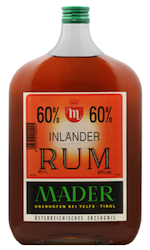
 Inländer Rum in Austria, Tuzemský Rum in Czech Republic and Slovakia, Domači, Čajni
and Tea Rum from from Croatia, Slovenia and Serbia, and various brands of rum from Hungary,
some of which are also called Tea Rum.
By the way, the names Inländer, Domači and Tuzemský all mean the same thing: "domestic".
"Čajni" implies being used in tea.
Inländer Rum in Austria, Tuzemský Rum in Czech Republic and Slovakia, Domači, Čajni
and Tea Rum from from Croatia, Slovenia and Serbia, and various brands of rum from Hungary,
some of which are also called Tea Rum.
By the way, the names Inländer, Domači and Tuzemský all mean the same thing: "domestic".
"Čajni" implies being used in tea.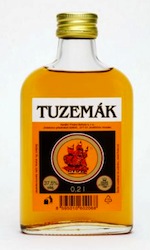 Now that most of these countries are happy campers in the European Union, the EU
government - in its infinite wisdom - became involved and enforced that the name "rum"
can be applied only to the products made from sugar cane.
As a result, as of 1 January 2003, "Tuzemský Rum" became "Tuzemák". However, somehow,
the Austraian manufacturers were allowed to continue using the name Rum, while the Czech
companies were not ....
Now that most of these countries are happy campers in the European Union, the EU
government - in its infinite wisdom - became involved and enforced that the name "rum"
can be applied only to the products made from sugar cane.
As a result, as of 1 January 2003, "Tuzemský Rum" became "Tuzemák". However, somehow,
the Austraian manufacturers were allowed to continue using the name Rum, while the Czech
companies were not ....
2.- http://www.rum.cz
3.- Wikipedia
The proportions of the 3 ingredients vary depending on who you talk to.
We like it as follows: